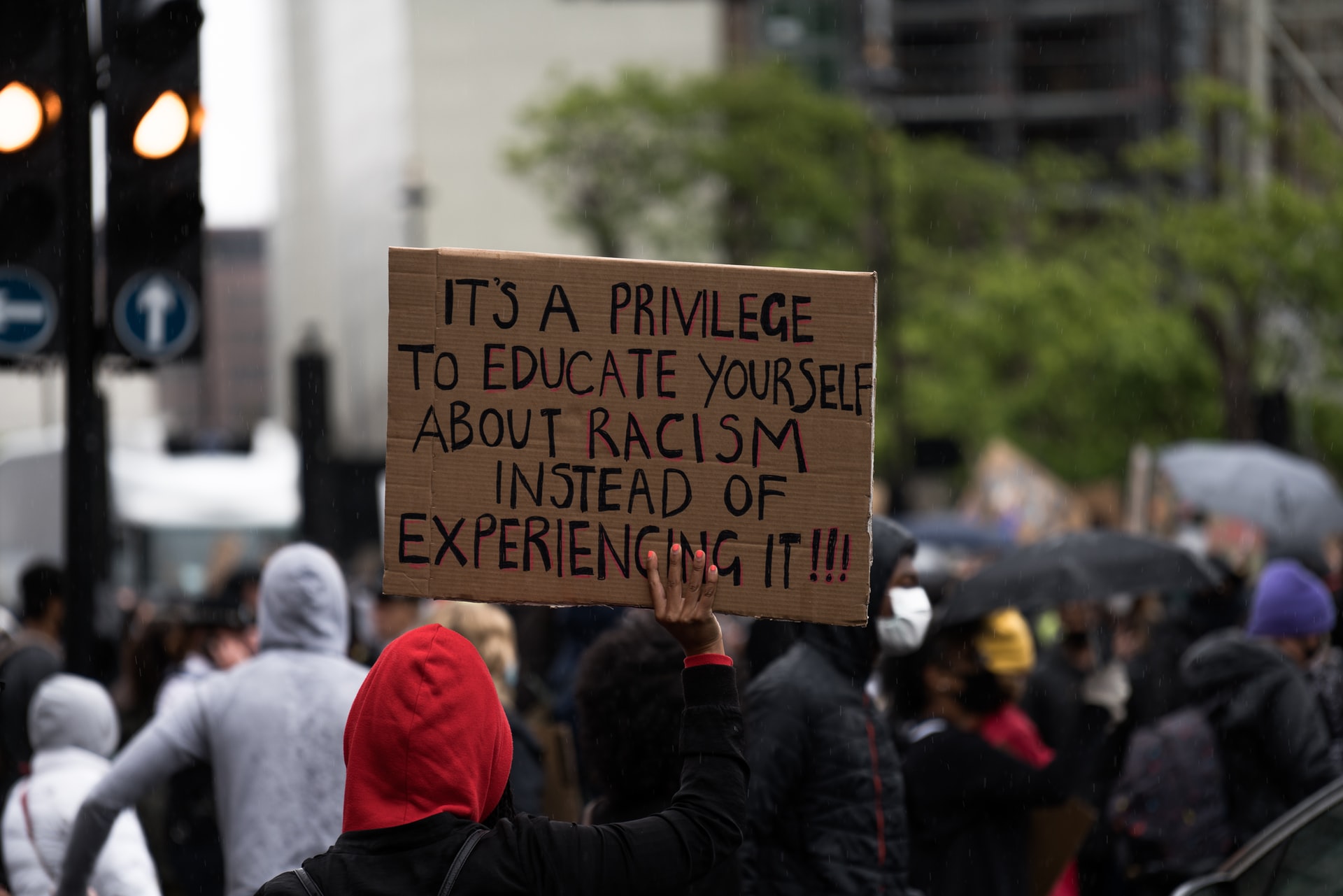
News Editor Anastasis Mauriac reflects on how her time at university and several books changed her view on whiteness
In Steve Garner’s book Whiteness: an Introduction, he states: ‘Whiteness for the majority of ‘white’ people is so unmarked that in their eyes, it does not actually function as a racial or ethnic identity, at least outside of particular contexts when they might perceive themselves to be in a minority. Whiteness is rendered invisible under the weight of accumulated privileges’. This quote reflects my experience.
I recently finished my second year where I realised I was going through a process that psychology scholar Janet Helms called a ‘white racial identity development’. It is 6 steps of white identity formation where one discovers their ethnicity, and the privileges or not that come with it. It is generally believed that when moving to university, students experience independence for the first time, and grow into their true selves, away from the influence of their parents. Some students discover alcohol, partying, dating different people…
“I was in the white minority in my friend group for the first time in my life
The reason why I relate to Garner’s quote is because during my first year at university, I was in the white minority in my friend group for the first time in my life. My whiteness became visible. I was living in the international block of my accommodation, and I met students from all ethnic, cultural and religious backgrounds. Becoming friends with Indian and Pakistani students who felt comfortable openly talking about race and skin colour shifted things for me. They were consistently bringing race back to the conversation, which made me acknowledge and notice ethnicity more, and identify very white environments. Indeed, they would not only talk about ‘black’ or ‘brown’ people, but also mention ‘white’ people. It was odd for me, and helped me recognise just how invisible I perceived whiteness to be.
My initial perception of whiteness was influenced by my upbringing. In my education, I was taught about racism, but was never taught what ‘white privilege’ was. Although my family is very open-minded, the language around ethnicity and skin colour is vague in France. There is a cultural fear of saying something wrong, or using offensive words because of ignorance, which creates a sense of taboo. In France, pointing out skin colour is frowned upon. Although the youth use slang to talk about skin colours, adults avoid mentioning it. If they do, there is always a visible discomfort and struggle because of the narrowness of the French vocabulary. Thus, I had always felt uncomfortable talking about skin colour and ethnicity until I met my friends in first year.
I believe it is a ‘white thing’ to be uncomfortable talking about race and ethnicity because of white people’s colonial history. Acknowledging race means recognising the power dynamics, and puts white people in an uncomfortable position. Indeed, McIntosh notes: ‘I think whites are carefully taught not to recognise white privilege, as males are taught not to recognise male privilege’. According to Wildman & Davis, this is because ‘in an intricate system of white privilege, Whites have the power to ignore and neutralise race when race benefits Whites’. By ignoring white privilege, white people can avoid accountability for their actions. Studying gender and sexuality, I have been taught about patriarchy and male privilege very early on, so the comparison between white privilege and male privilege makes a lot of sense to me.
“By ignoring white privilege, white people can avoid accountability for their actions
This acknowledgement of my white identity and privileges had an impact on my views about feminism as well. I have always been interested in power relationships between men and women, but coming to the University of Birmingham to study political science and sociology based on gender and sexuality, I learned a lot about non-white women’s struggles. I realised that my perspective on feminism was everything but intersectional. Before university, my definition of feminism was centred on one type of experience: western white middle class women. I had not read one article about Black, Asian or Muslim women’s experience, or even realised that most of the feminist literature I read was written by white women.
It is easy to limit oneself to one definition, especially when that description resembles your own experience. Discovering intersectional feminism truly opened my eyes. I believe intersectional feminism is so important to represent all experiences, and reinforces solidarity and inclusivity. There is a lot to learn from different perspectives. I felt ashamed for having ignored this whole side of the feminist movement. I believe it is my responsibility as a self-proclaimed feminist, to learn about all women’s experiences, and not just women that resemble me.
Ignorance is a dangerous tool used by malicious individuals or groups to instil fear of the foreign. Learning about different cultures, and religion, and changing your perspective opens a new world of meanings, and prevents the consequence of the fear of the unknown – hate.
Works cited:
Garner, S. (2007) Whiteness: an Introduction
Helms, J. (1990) Black and White Racial Identity: Theory, Research, and Practice
McIntosh, P. (1988) White Privilege: Unpacking the Invisible Knapsack
Wildman, S. and Adrienne Davis (1997) Reflections on Whiteness and Latina/o Critical Theory
Read more from Life&Style:
The Political Runway: Dress History, Kim Kardashian and Marilyn Monroe
Comments